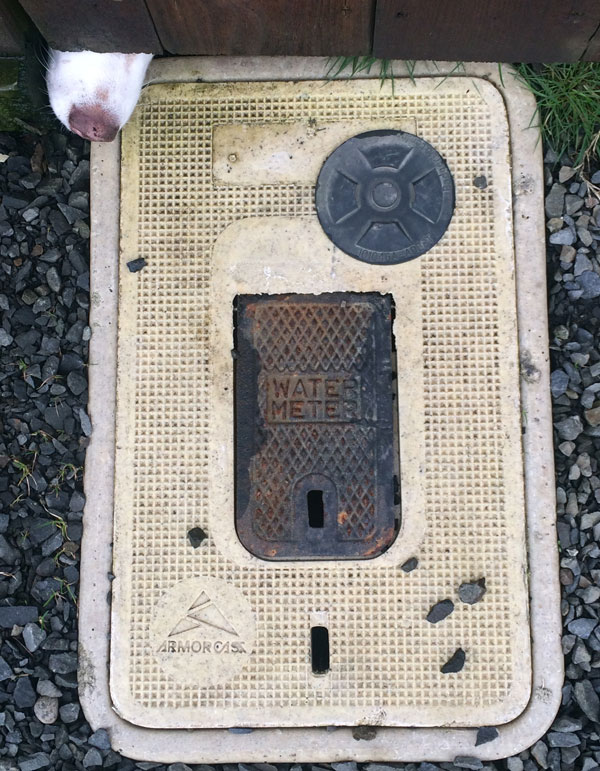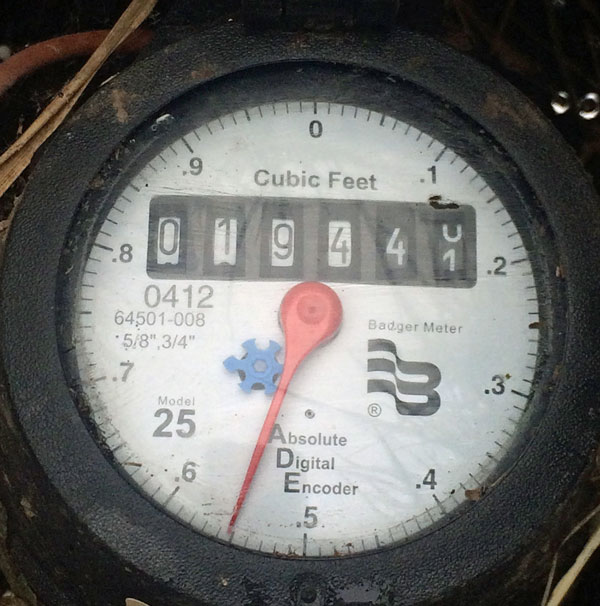Is your toilet leaking? What about your faucets? A small leak may not seem like a big deal, but it wastes water and money. The Environmental Agency estimates that Americans lose more than 1 trillion gallons of water each year through leaks.
The agency has designated March 14 -20, 2016 as Fix a Leak Week. But with so much money and resources disappearing down the drain, any time is a good time to quit wasting water.
Hidden leaks are even more insidious than obvious ones. When you can’t see or hear water dripping, losses could continue for weeks before you suspect there’s a problem. There’s more than one way to chase down a leak. Here are a few ways you can find and stop sneaky leaks.
Check Your Bill
The first sign of a hidden leak can be a higher than normal water bill. Water meters are read monthly, bi-monthly or quarterly. If you live in Portland, the city may leave a notice on your door if the meter reads unusually high compared to your normal consumption.
Higher than usual usage could be caused by extra people in the house, seasonal irrigation or a leak. Your bill may include a graph comparing monthly consumption for the current and previous year. Studying the graph is good way to determine what’s normal for you.
What’s ‘Normal’ Usage?
The EPA estimates the average household consumes 3,000 gallons per month, per person. The City of Portland measures water in hundred cubic feet. The city recommends checking for leaks if your household uses more than 8 CCF of water per person over 3 months. That works out to 1,995 gallons per person per month. One CCF is 748 gallons. These numbers are most relevant during cold months. Water consumption is generally higher in summer.

Water meters are usually in underground boxes near the property line in front or in back of your house. Finding the meter is the first step to sniffing out leaks.
Find Your Water Meter
You don’t need to wait for a bill to check water usage. Most homes around Portland have an accessible water meter. The meter is usually in front of the house, in an underground metal box marked “WATER METER.” Look for the box between your property line and the street.
On unimproved roads the meter may be obscured by tall grass, gravel or other vegetation. Always keep the area around the meter clear of vehicles, debris and plants. If the meter can’t be read by your water bureau, you may get a bill based on an estimate. Replace the lid after you read the meter.
The water meter box may also contain a shutoff valve. This valve turns off water at the street, for both your house and yard. Most houses also have another main shutoff valve just for indoor water.
Read Your Water Meter
- Access the meter: Remove the metal lid. Lids are heavy but can generally be removed without a tool. The meter itself will be in the box and may include a flip-up cover.
- Read the dial: The meter will have a round face with numbers and a sweep hand. There will be a number display showing the amount of water used. Units will be CCFs or gallons.
- Find the leak-detection dial: If your meter has a leak-detection dial, it may be small and triangular-shaped. The detector is often red or blue.
- Look for movement: When water is being used, the leak-detector will spin, and you may see the larger hand moving slowly.

Many water meters have a small leak detector dial. The dial may be blue or red.
Use the Meter to Check for Leaks
Your water meter can help you determine if the plumbing has a leak. You can detect a leak fairly quickly if your meter has a leak-detector indicator. If your meter doesn’t include a leak-detector dial or has a slow leak, it may take a few hours to complete the check.
Before checking the meter, be sure no one is using water. All the indoor taps, outdoor faucets and water-using appliances should be turned off. Don’t flush the toilet during the test.
- Stop all water use. Make sure no water is being used inside or outside.
- Read the meter. Watch the leak-detector dial. If it’s spinning, your home has a leak. The main sweep hand may be moving slowly.
- No leak-detector dial? Even if you don’t see the main sweep hand moving, you could still have a slow leak. You’ll need to track the sweep hand over a couple hours. Note the position of the hand. Return after an hour or two, making sure no water is used. If the hand has moved, there’s a leak somewhere in the system.
Is the Leak Indoors or Outdoors?
How can you tell if the leak is inside or outside the house? You can use the water meter and your home’s main shutoff valve to start locating the problem.
- Turn off the main water valve. The valve may be near the water heater, in your basement or garage. Some old homes don’t have a main shutoff valve. This test won’t work if you’re not able to turn off the indoor water.
- Test a tap. Turn on a faucet to test if the shutoff valve worked. Keep the faucet open for a few seconds to let water in the pipes empty. If the tap’s dry after a few seconds, the shutoff valve worked. Go back to the meter.
- Read the meter. Check the leak-detector dial and sweep hand.
- The leak is indoors if neither dial is moving. You’ll need to check your fixtures and appliances to find the source of the leak.
- The leak is outside if there’s any movement of the dials. The leak is somewhere between your home and the water meter. An underground pipe could be leaking, or an outdoor tap could be to blame.
Common Household Leaks
Toilets, valves, faucets, showerheads and irrigation systems are possible sources of leaks. These types of leaks are often simple to fix. Either you or a plumber can repair or replace fixtures.
If it’s time to install a new fixture, increase your savings by choosing low-flow products and high-efficiency appliances. If you decide to work on a leak yourself, don’t forget to turn off the water to the fixture. Leaks in underground pipes require the assistance of a professional plumber.
- Toilets. Test your toilet for leaks by adding a dye tablet or 10 drops of food coloring to the tank. Wait 10 minutes. Check the bowl for color. If the water shows the food coloring, your toilet is leaking. Flush to remove the color. Installing a new flapper may fix the leak. Learn how to replace the flapper with our tutorial.
- Faucets. Faucets may leak when gaskets and washers wear out. For more help, check out our guide to repairing a leaking faucet.
- Showerheads. Check the connection between the showerhead and the pipe stem. You may need be able to fix the leak by taking the showerhead apart, removing the buildup and installing a new O-ring. Pipe tape can temporarily hold a leak until a repair can be made.
- Pipes in walls: The repair work for an in-wall pipe is more involved than for a fixture. Plumbers have the skills and tools to make these repairs most effectively.
- Irrigation systems: In-ground systems can be damaged during winter freezes. Check your system for leaks each spring. Minimize the risk of leaks by winterizing in the fall.
- Garden hose: Check outdoor spigots. If you find a leak where the hose connects to the spigot, replace the washer in the hose.
- Underground leaks: There are several signs of an underground, including: wet spots in the landscape, unusually green or soft areas in your lawn, rusty or dirty water, sinkholes and heaving pavement.
Meticulous Plumbing is here to help. We’ll help you find leaks and recommend the most effective fixes. Get in touch today!


